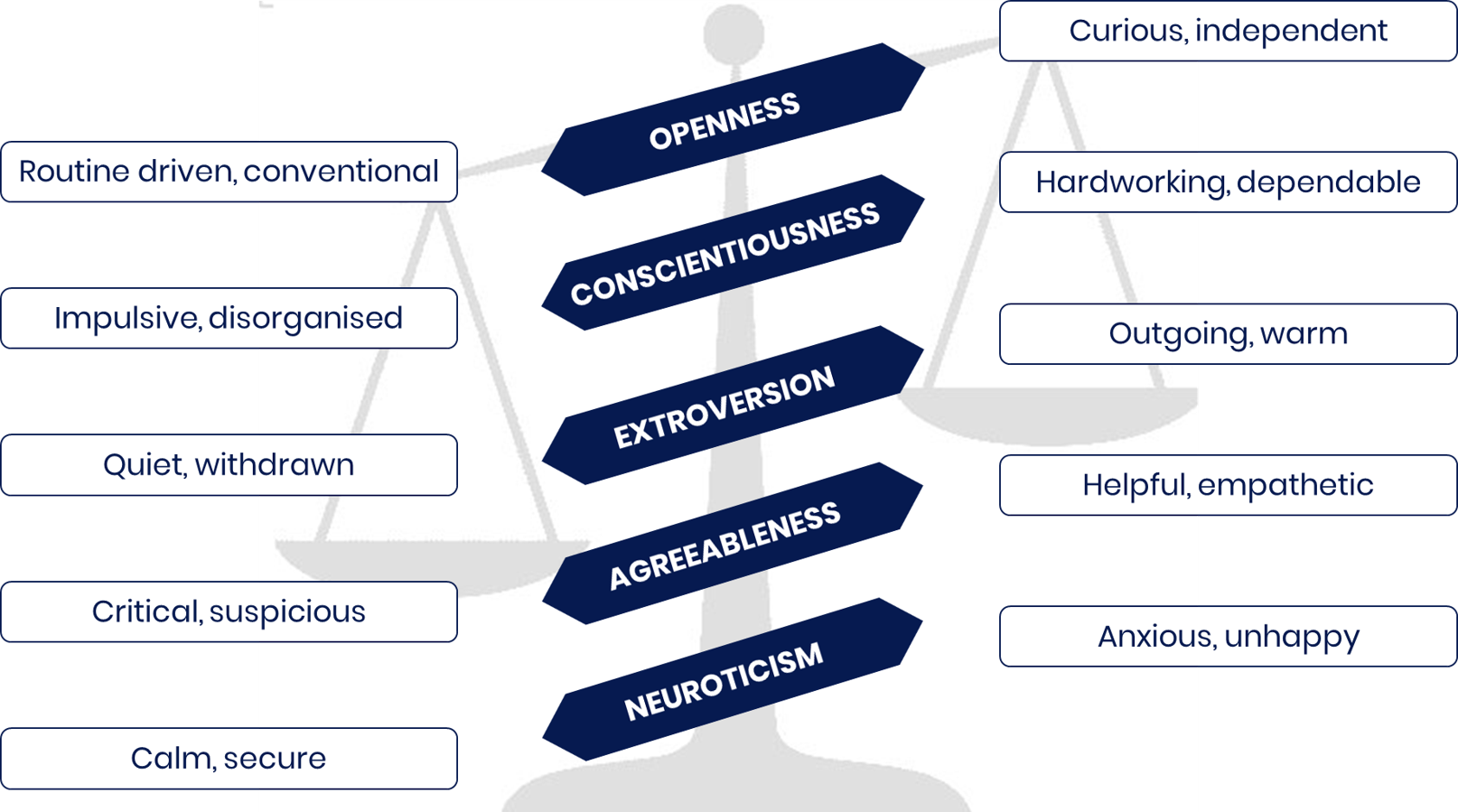The personality of leadership
The personality of leadership
Leadership or lack of it, can make or break an organisation and as such deserves to be a focus for all companies that are looking to get better at what they do. This article looks at how competent personality assessment coupled with business expertise will help to remove bias, avoid groupthink, and get the right character for the role. We spoke to members of our team of Chartered Occupational Psychologists Andreas Lökken and Malin Mella, and Leadership expert Rachael Hanley-Browne, to learn more about how natural talents and potential can be accurately predicted without the interference of human bias in executive selection and development.
“Leaders instil in their people a hope for success and a belief in themselves. Positive leaders empower people to accomplish their goals.”
We all have a personality, the fundamental thoughts and attitudes that we take with us wherever we go, and it is as unique as our fingerprints. Our personalities are initially determined by nature but then evolve over time as our experiences, our goals, and our circumstances change. Some personality traits will remain constant and others will continue to emerge, dominate or decline throughout our lives. Positive traits can be encouraged and developed, and negative ones mitigated against through self-knowledge.
Through extensive research, psychologists have determined that five personality traits remain relatively stable throughout most of our lifetime – the big five, as outlined in the diagram below. They are influenced significantly by both genes and the environment and individuals can fall anywhere on the continuum for each trait. Each one has significance in how we perform in a leadership role.
The Big 5
“These cognitions drive how we work and at any point in time can be as predictable as a computer algorithm. People tend to behave in a consistent way,” states Andreas Lökken, “and it is entirely possible to create a flash imprint of personality using scientifically validated psychometric tools.”
Research by Schmidt and Hunter concludes that those persons who perform well in psychometric testing prior to an offer of employment are more likely to fit in with the business and its values as well as adapting to their actual role more quickly and with improved job performance.[1] It is no surprise that leadership qualities can be determined through controlled interaction with digital testing platforms that now harness data analysis and machine learning, when even our social media[2] and gaming behaviours reveal big clues to our personality. Psychometric tests that calculate and predict the big five, have been continually refined since the early part of the 20th century and confidence in them has risen exponentially on a global scale. “These tests remove unconscious human bias and seek just the right profile of qualities irrespective of gender, race or academic background.” continues Lökken.
“These tests remove unconscious human bias and seek just the right profile of qualities irrespective of gender, race or academic background.”
However, when it comes to leadership roles, using standalone testing is not enough. “Business has a lifecycle,” states Rachael Hanley-Browne, “most commonly divided into five stages from launch to growth, shake-out, maturity, and decline. The person you need leading within a start-up is probably not the same person you need to be managing a mature organisation. A successful hiring process should align leadership characteristics with corporate strategy. It is essential to explore the existing dynamics, analyse the business drivers behind the role and the objectives and characteristics that will make the candidate perfect for the role.”
Lökken agrees, “Theory of mind provides us with a way of predicting how likely we are to act in any given situation but the right person for a role might not always be the person that boards ‘think’ they need. Yes, in general calm, well-balanced, structured personalities will lead better than moody, hostile, chaotic, people – but on occasion, traits that have negative connotations such as stubbornness or dominance, can be highly desirable within certain roles and stages in the business lifecycle.”
“Leadership assessments aren’t just necessary during the selection process but also have their part to play in leadership development, team assessment and audits.” states Malin Mella, “Diversity of thought might be required if board analysis reveals a gap within the team and a tendency towards groupthink. The existing leadership may need to be steered away from hiring and moulding carbon copies of themselves, or simply embracing the ‘easiest’ personalities.”
In conclusion, there is no single way of determining who will make a great leader. However, by harnessing the power of testing and combining it with board dynamics, psychometric analysis and business expertise, organisations can definitely start off with the someone who has the successful leadership qualities that are as uniquely matched to the organisation as they are to themselves.
If you are curious to learn more about how we at Alumni work with assessments and leadership development or if you have experience within the field that adds a further perspective on this topic, we would love to hear from you!
Andreas Lökken
Chartered Psychologist and Consultant
E-mail
Chartered Psychologist and Consultant
E-mail
References
[1] Schmidt, F. L., & Hunter, J. E. (2014). Methods of meta-analysis: Correcting error and bias in research findings (3rd ed.). Thousand Oaks, CA: Sage.
[2] https://www.almendron.com/tribuna/wp-content/uploads/2018/03/predicting-the-big-5-personality-traits-from-digital-footprints-on-social-media-a-meta-analysis.pdf







